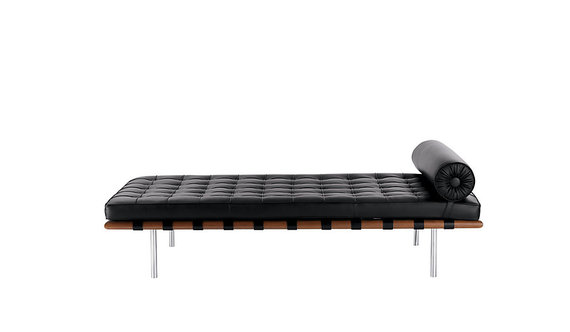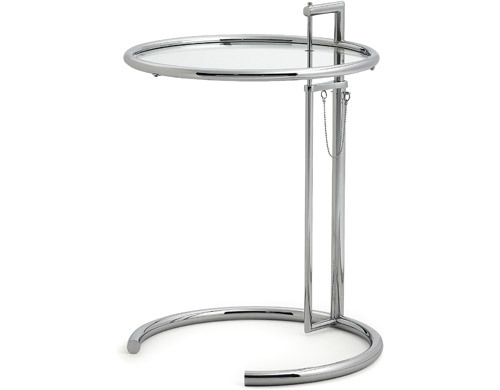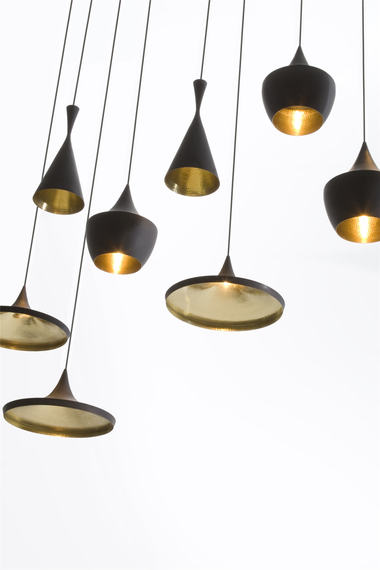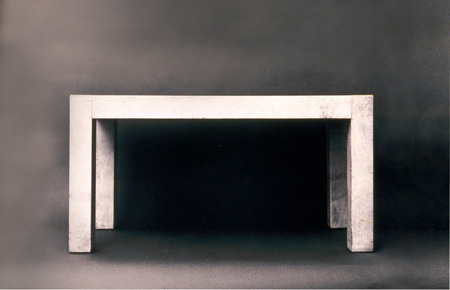At this point identifying an Eames chair is like picking Brad Pitt out of a line up. Its shape and form are ingrained in our brains. But what makes a design iconic, and how do certain pieces achieve this level? Like movie stars, designed objects carry a similar visual power. We are drawn to them for their beauty and distinct features. Either from prolific use over a number of years (or decades) or by taking center stage in an art installation, a popular restaurant, hotel, or movie set, certain pieces become instantly recognizable to us. If you love design you're probably familiar with a long list of iconic designs. Here are a few that should be on your radar.
Panton Chair![]()
Designed in the 1960s by Verner Panton, and first produced by Vitra (who still manufactures it), this sculptural chair is one of the most iconic designs known today. Working with plastic, a relatively new furniture material at the time, Panton created the chair from one solid piece of cast polypropylene. Light and stackable, he designed this durable seat to be used anywhere, and it has a comfortable form that molds to the user's body.
Barcelona Couch
Sure you've seen the Barcelona Chair, but did you know there's a whole suite of furniture to match? The Barcelona Couch was designed in 1930 by Ludwig Mies van der Rohe, a year after he designed the iconic chair and stool for the Barcelona Pavilion. Sharing the modern lines, chrome legs and tufted leather of the Barcelona Chair, the Barcelona Couch offers a loungy alternative to the iconic chair. This piece started to achieve iconic status in the mid twentieth-century when architects and designers, including Philp Johnson, began using the couch in their interiors.
E1027 Side Table
If there is one thing most iconic designs have in common, it's inspiring hoards of knock-offs. Eileen Gray's adjustable side table is no stranger to copycats. Originally designed in 1927 by the Irish-born designer for a French client's contemporary home, this side table is a staple of modern design. Gray's tubular steel table with an adjustable glass top excels in both form and function, making this piece a favorite of Modern and Minimalist design lovers.
Parsons Table
Found in many forms like desks, dining and side tables, the Parsons table was originally designed by Jean-Michel Frank in the 1930s. The table's defining feature is the design of its legs, which are the same thickness as the top, and flush with the sides. It's named after The Parsons School of Design, where Frank was teaching when he first created the original table (pictured above). Today this design is ubiquitous and can be found in a number of different reincarnations, from places like IKEA to Pottery Barn and west elm.
Beat Lights
Meet Tom Dixon, the British designer known for the "S" Chair and a slew of modern lighting fixtures and art installations. This contemporary designer consistently creates eye-catching pieces. One of my favorites: his Beat line of lighting fixtures. With a variety of MCM (mid-century-modern) inspired shapes and available in white, gold, black, and brass, the hanging pendants offer a refreshingly modern look with an homage to the past. They are perfect for loft spaces and understated interiors and will surely continue to maintain iconic status in the future.
Love these iconic designs? Read about more designs you should know.
All images: Vitra, Design Within Reach, Hive Modern, The New School, Tom Dixon
